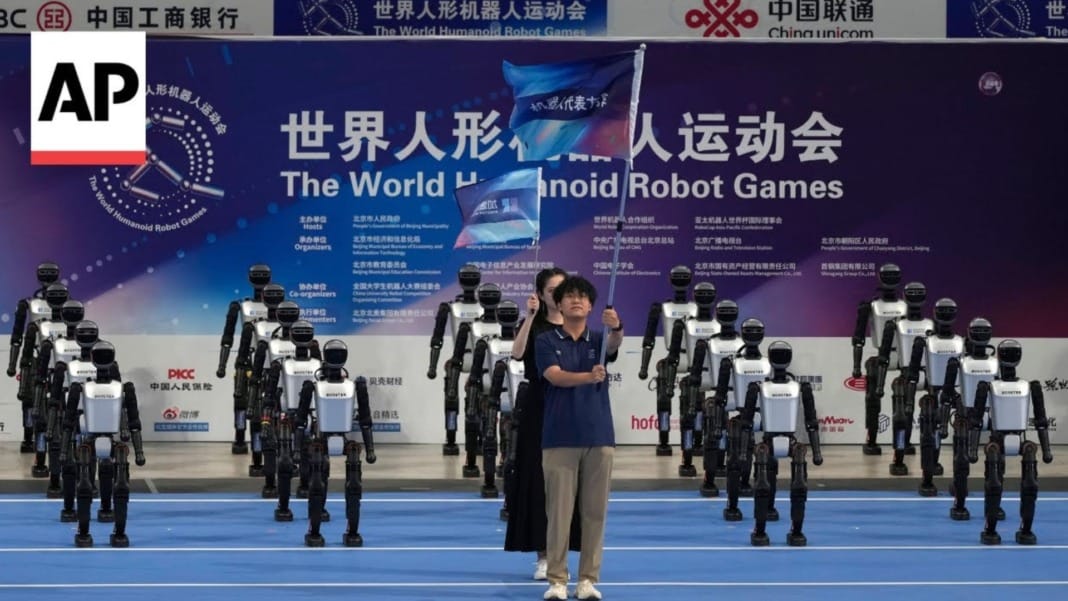Hundreds of humanoid robots gathered in Beijing, China, for the inaugural World Humanoid Robot Games, an event that combines sports, performance, and real-world challenges. The three-day competition, which began on 15 August, features over 500 robots grouped into 280 teams from 16 countries, including China and the United States. Teams represent robot manufacturers, universities, and research institutions, all of which aim to push the boundaries of robotics technology.
A wide range of events
The World Humanoid Robot Games introduces 26 events across three main categories: athletics, performance, and scenario-based tasks. The athletic contests mirror human sporting events, with robots competing in 400-metre and 1500-metre running races, long jump, high jump, gymnastics, and football matches. While many robots displayed impressive speed and agility, others struggled to keep up, showing the challenges of replicating human-like motion.
The performance events showcase the creative side of robotics, with robots demonstrating solo and group dances, martial arts routines, and musical skills, including piano and drumming performances. These spectacles combine technical engineering with artistic presentation, offering a glimpse of how humanoid robots might contribute to future entertainment industries.
In scenario-based challenges, robots are tested in practical applications. Tasks include sorting medicines, handling industrial materials, and providing hospitality services. These simulations aim to demonstrate how robots could support human workers in healthcare, industry, and customer service environments.
Robots entertain and stumble
Footage from the opening day has already captured global attention. One highlight featured robots sprinting along a track, although not all competitors managed to stay within their lanes. Other clips showed a robot confidently playing the piano, while another displayed impressive drumming skills. A light-hearted fashion show segment featured robots dressed in elaborate costumes as they walked a makeshift runway, with one collapsing mid-performance and needing human assistance to be carried offstage.
A group of around 25 robots also marched in formation, sparking curiosity about whether the display was a rehearsal for competitive performance or a demonstration of coordinated robotics training. Robot football, a consistent favourite, entertained spectators, though the standard of play confirmed that it will be some time before machines can rival human athletes on the pitch.
A platform for innovation
Despite occasional malfunctions, the event showcases the significant advancements in humanoid robot technology over the past few years. The Beijing competition offers researchers and developers an international platform to showcase their latest innovations, while also enabling the public to witness the progress being made in robotics.
With participants ranging from academic teams to major manufacturers, the Games underline the growing global interest in humanoid robots. While entertainment value remains a major draw, the broader aim is to explore practical applications of robots in society, whether in healthcare, industrial settings, or everyday services.
As the competition continues, the World Humanoid Robot Games is set to showcase not just the technical achievements of today but also the potential future role of robots in human life.





